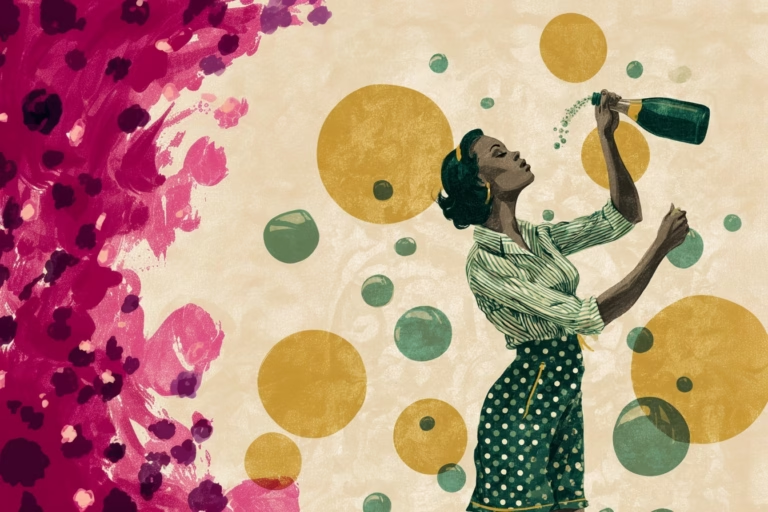Côte (de Nuits) to Côte (de Beaune): Exploring Burgundy

If Bordeaux is the bold, structured power suit of French wine, Burgundy is its effortlessly chic silk blouse—elegant, a little bit delicate, and easy to dress up or down.
Before the designer labels and cult followings, Burgundy’s wine story was actually written by monks with dirt under their fingernails. Starting in the Middle Ages, Cistercian and Benedictine monks became the region’s first serious vignerons, meticulously mapping vineyards, observing soil differences, and literally tasting the earth to understand what made each tiny plot unique. These robed trailblazers didn’t just make wine for Sunday mass—they created the blueprint for Burgundy’s obsession with terroir, painstakingly walling off the best vineyard plots (like the famous Clos de Vougeot) and keeping detailed records that still influence winemaking today. Think of them as the original wine influencers, but with vows of silence instead of Instagram accounts.
Nestled in the east-central part of France, Burgundy (or Bourgogne in French) is the birthplace of two of the world’s most beloved grapes—Pinot Noir and Chardonnay—and continues to produce some of the most renowned expressions of each.
Whether you’re a seasoned sipper or new to the world of wine, Burgundy has a way of capturing both the heart and the palate. Let’s uncork what makes this iconic region so special—from its climate and terroir to its subregions, grapes, and (of course) its wines.
Too Continential Cool to Care
Burgundy stretches from just south of Dijon to the outskirts of Lyon, with most vineyards hugging a narrow strip along the limestone-rich hillsides. This is a cool continental climate region—meaning four distinct seasons, frosty winters, and warm (but not hot) summers. It’s also notoriously unpredictable, with spring frosts, summer hail, and autumn rains that can make or break a vintage.
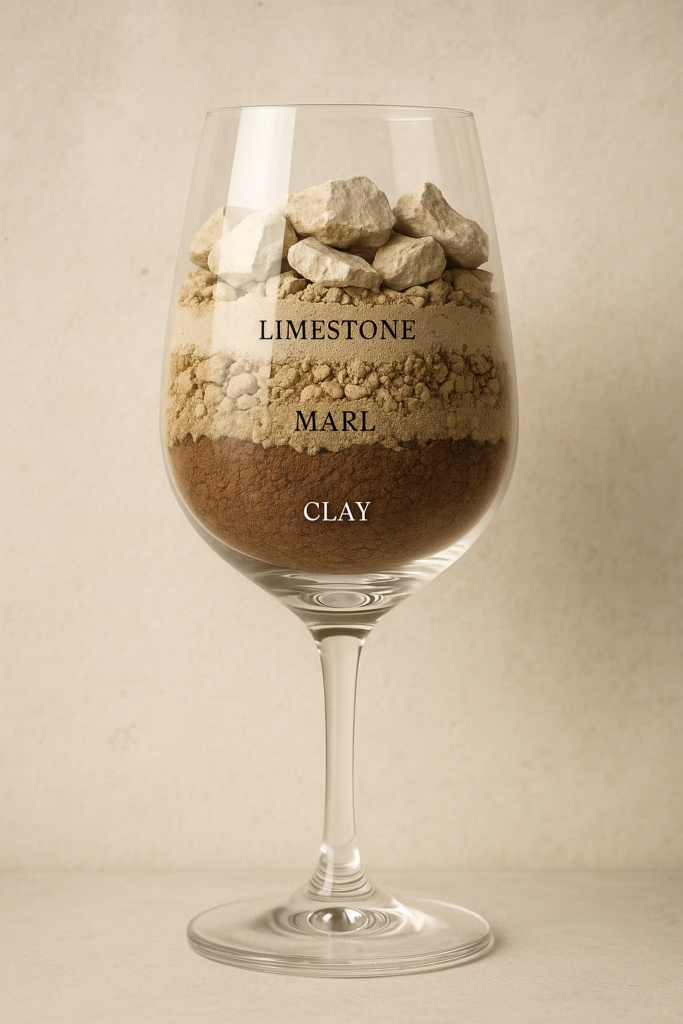
Compared to other major French wine regions, Burgundy is cooler and more temperamental. Bordeaux benefits from a milder maritime climate with more consistent warmth and rainfall, while the Rhône Valley—especially in the south—is hotter and drier, producing bolder, riper styles. And to the north, Champagne skews even chillier, favoring sparkling wines over still. Burgundy’s unpredictable weather adds risk—but also results in wines with incredible nuance and character.
But what really defines Burgundy is terroir—that mythical combination of soil, climate, slope, and even vine age that gives each vineyard its own personality. The soils here are ancient and complex, layered with limestone, marl, and clay, formed when the region was under a tropical sea hundreds of millions of years ago.
This mosaic of microclimates and soil types means that wines can taste different even when grown meters apart. Hence the dizzying number of vineyard names and classifications. In Burgundy, a vineyard isn’t just a place—it’s a story in a bottle.
From Côte to Côte: Burgundy’s Subregions
Burgundy is divided into five main wine growing areas, each with its own character. We’ll go from north to south:
Chablis
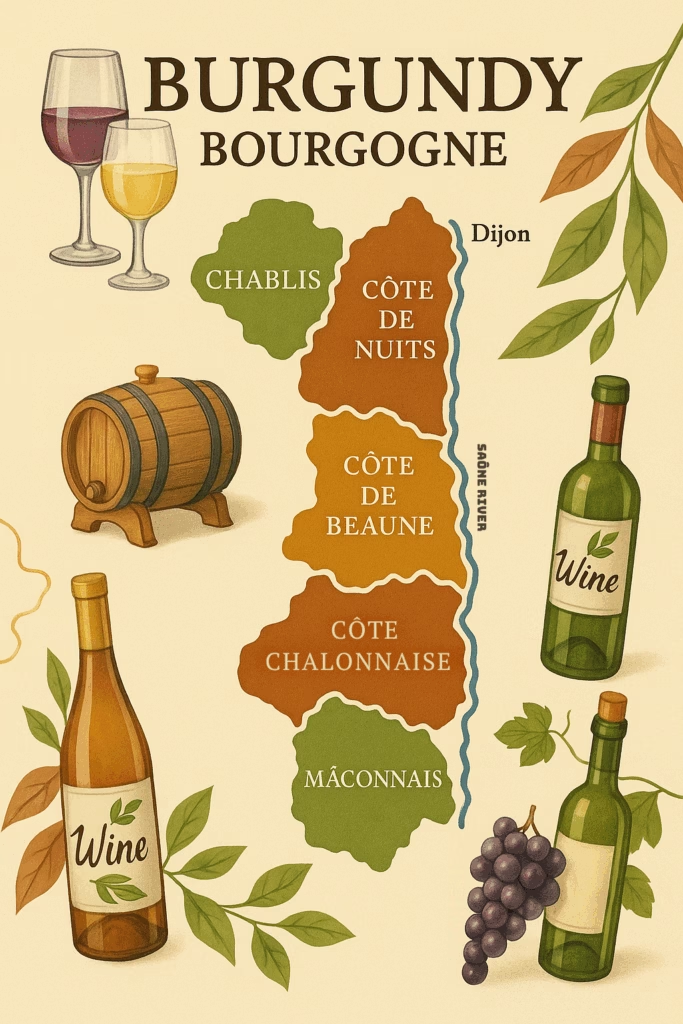
Famous for steely, mineral-driven Chardonnay. Located furthest north—and further west than the other wine regions—it’s actually closer to Champagne than the rest of Burgundy. The cool climate and Kimmeridgian limestone soils give Chablis its signature flinty, citrusy style—think green apple, lemon zest, and oyster shells.
Côte de Nuits
This is Pinot Noir paradise. The Côte de Nuits runs from Dijon to Corgoloin and is home to legendary Grand Crus like Romanée-Conti, La Tâche, and Clos de Vougeot. Wines here are structured, age-worthy, and known for red berry fruit, earthy forest floor, spice, and silky tannins.
Côte de Beaune
Just south of Côte de Nuits, this is where Chardonnay shines brightest, with standout Pinot Noir to match. Puligny-Montrachet, Meursault, and Corton-Charlemagne produce some of the world’s most elegant and complex white wines—think pear, brioche, hazelnut, and wet stone.
Côte Chalonnaise
Often overlooked (and more affordable), this region offers great value. Expect lighter, more approachable versions of Pinot and Chardonnay, plus some stellar Aligoté and Crémant de Bourgogne (Burgundy’s sparkling answer to Champagne).
Mâconnais
The southernmost subregion, where sunshine is more generous and the wines are rounder and riper. Known for easy-drinking Chardonnay with peachy fruit, floral notes, and a touch of creaminess. Look for labels like Mâcon-Villages, Pouilly-Fuissé, and St-Véran for everyday gems.
Burgundian Grapes: Where Doing Less with Less is Best
Burgundy is all about focus. While Bordeaux juggles blends and multiple varieties, Burgundy generally sticks to the region’s OGs:
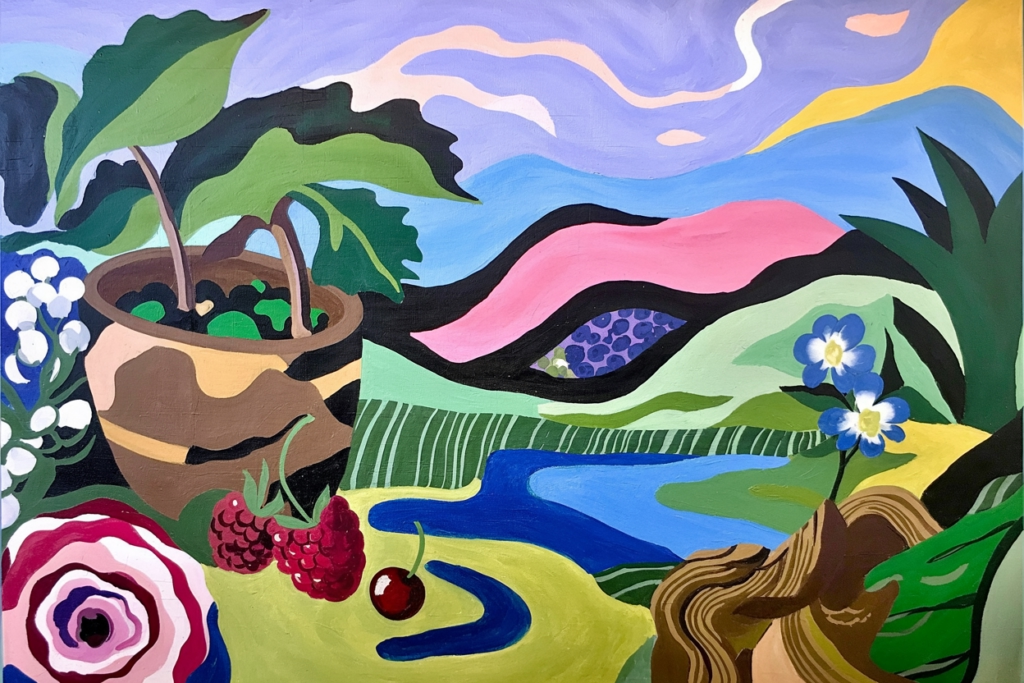
Pinot Noir
The diva of the vineyard—thin-skinned, fussy, and sensitive to shifts in weather or soil. But when Pinot gets what it wants (and it often does in Côte de Nuits), it delivers hauntingly beautiful wines. Expect aromas of red cherry, raspberry, rose petal, forest floor, and spice. Burgundy’s Pinot is typically lighter in color, with high acidity and a silky texture that unfolds over time.
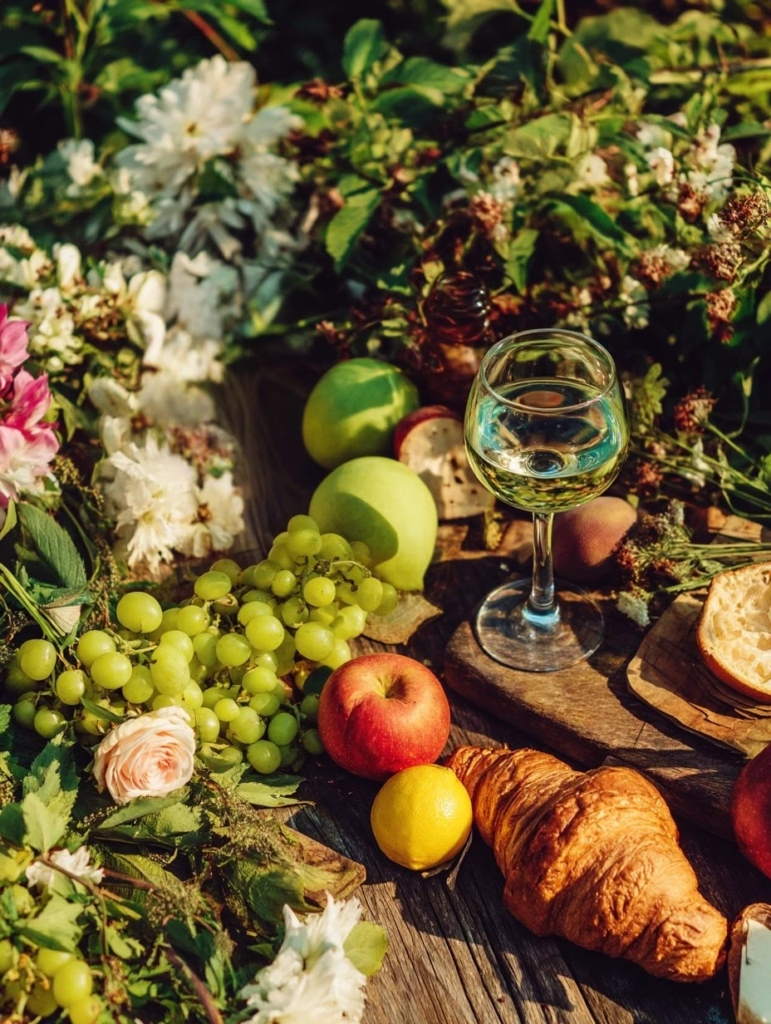
Chardonnay
Forget the oak bombs of yesteryear—Burgundian Chardonnay is all about balance. From the steely edge of Chablis to the creamy depths of Meursault, it shows just how versatile this grape can be. Expect flavors of citrus, green apple, white flowers, and occasionally, a toasty, nutty richness depending on the vineyard and winemaking style.
Aligoté
The underdog white grape of Burgundy, Aligoté is high-acid and zippy, often used in Kir cocktails (white wine + crème de cassis). Aligoté tends to live in Chardonnay’s shadow, but when grown with care—like in Bouzeron—it can be delightfully crisp and citrusy.
Burgundy’s Je Ne Sais Quoi
Given both Pinot Noir and Chardonnay’s global footprint, what sets Burgundy’s wines apart from those in other regions like Oregon, California, or New Zealand?
Climate & Ripeness
Burgundy’s cooler climate means lower alcohol, higher acidity, and more delicate fruit flavors. Think red currants instead of blackberries. Peach skin instead of tropical fruit. It’s less about boldness and more about finesse.
Soil and Structure
The limestone and clay soils in Burgundy give both Pinot and Chardonnay a mineral backbone—often described as “chalky,” “flinty,” or “stony.” It lends a subtle tension to the wines that’s harder to find in warmer New World regions.
Single Vineyard Expression
In Burgundy, most wines come from single vineyards, even tiny plots within larger villages. This sharp focus allows producers to showcase the personality of a specific site, rather than blending grapes across wide areas. It’s a purist’s dream.
Minimal Intervention Winemaking
Many Burgundian producers let the vineyard do the talking. That means native yeasts, gentle extraction (how intensely the juice is pressed from the grapes and how much color, tannin, and flavor compounds are drawn from the skins), and aging in mostly neutral oak (barrels that have been used for several vintages, so they impart subtle structural elements without overwhelming the wine with oaky flavors like vanilla or toast). The goal isn’t to shape the wine—but to reveal it.
🌎 Old World vs. New World: Think of Oregon Wine Country as Burgundy’s cool little sibling across the pond. Both regions are Pinot Noir royalty (and even share some common producers), but while Burgundy leans earthy, restrained, and age-worthy, Willamette Valley Pinot is often brighter, juicier, and more easygoing. Blame it on Oregon’s volcanic soils and gentler climate—same grape, different vibe. A great side-by-side tasting if you’re feeling curious!
The Bottom Wine
Burgundy isn’t just a wine growing region—it’s a whole mindset. Sure, it asks a bit more of you: a little patience, a little curiosity, maybe a little more room on your credit card for that Grand Gru. But in return, it offers wines that whisper instead of shout—wines that tell the story of a place, a vintage, even a single slope of soil.
So whether you’re popping open a humble Bourgogne Rouge or treating yourself to a Grand Cru, you’re not just sipping wine—you’re sipping centuries of tradition, geology, and craft.
Are you team Old World or New World when it comes to Pinot? Drop your pick in the comments—I’d love to know which side of the vine you’re on.


